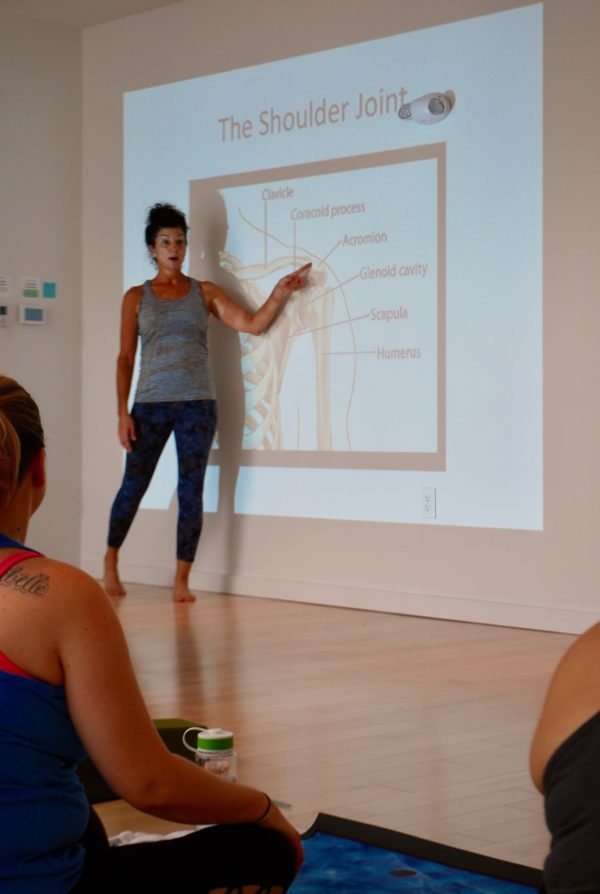
Regardless of the style of yoga you’re teaching, there is no doubt you’re working with the shoulders a great deal. Even in a purely restorative practice, there are a few Downward Facing Dogs or maybe a Thread the Needle Pose, both of which effect the shoulder joint, In fact, in one there’s a focus on external rotation and in the other, the focus is on internal rotation. Do you know which is which?
As a yoga teacher, it’s critical we understand shoulder anatomy in large part because in so many styles of practice, we spend a lot of time using our shoulders to support our body. Think about Downward Dog, as above, Plank, Low Push Up, Crow, Side Plank, Half Moon…. I think you get the idea. So, if that’s the case, why do teachers often struggle with correct cues to the shoulder?
Part of the challenge is because the shoulder JOINT moves differently from the scapula themselves. The description of anatomical movements of the joint versus the scapula are different and this is often confusing. Additionally, sometimes teachers are not familiar with the difference between flexion, extension and internal and external rotation and what muscles do what, so without that baseline, it’s really impossible to give correct cues from a movement perspective.
Here are a few quick tips about the shoulder and just to keep it really focused on teaching, these tips will relate to movement:
- When the arm is reaching to the sky, the shoulder is in flexion. So, saying, “extend your arms overhead” is technically incorrect. However, it’s conversational and most people understand it so in my view it’s acceptable to use. However, it’s important that as a teacher, you recognize the shoulder is in flexion.
- The scapula needs to upwardly rotate in order for the head of the humerus to clear the acromion of the scapula when the shoulder is in flexion. So, asking people to “drop the shoulders” when their shoulders are in flexion, like in Warrior 1, is incorrect.
- Even though the palms face down in many poses ( see list above ) the student should still try to create some external rotation. It’s hard because the palms are down and it’s easier to hunch. However, your cues to the shoulders should be focused on external rotation, not dropping the shoulders or lifting them towards the ears in these poses.
- Sometimes, it may seem like the shoulders are in internal rotation when in fact, they’re externally rotating. In order to tell, you need to look at the movement from the joint, not the movement the arm is making. So, in Eagle, even though the arms are wrapping in and the shoulders are adducting, they are also working towards a little external rotation too. If you’re unsure, do the opposite; internally rotate your shoulders in Eagle and you’ll see this is most definitely not what you’d want your students to do.
- It’s harder for students to maintain scapular adduction when they are fighting gravity. So, when you have them “bind their hands behind their back” and then “fold forward” in any pose, like Straddle Fold or Rag Doll, watch how they lose their scapular adduction and keep cueing them to try to keep it. Other ideas include having them bend the elbows and to use a strap.
Next week, I’m releasing a free three part video series on shoulder anatomy. If these tips above are confusing or even if not, sign up for the training here. The ONLY way to get it is via email as I’m not releasing it on social media.
Got questions? Leave a comment below!
